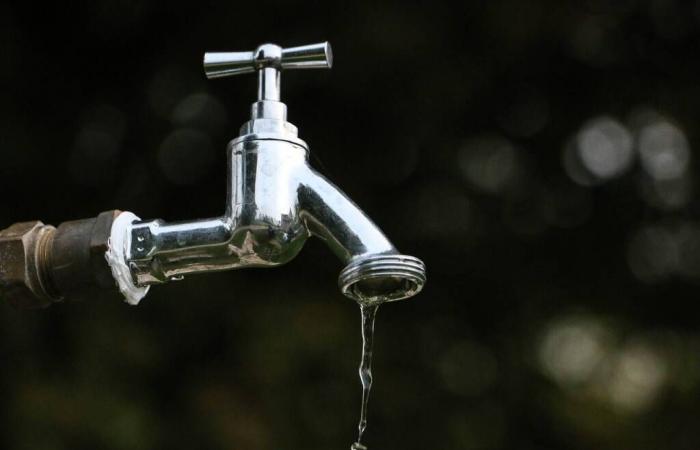Let’s try to explain why politics should talk less about the burning issue of these weeks: the water crisis. Instead, it should apologize to citizens and repair the mistakes made in these decades. Let’s not start from 1996, it would be a long and complicated story, between national regulations and regional decisions, between resources for projects and failures towards citizens. Let’s start from 2008 with a couple of objectives that the Region announced in a document evaluating the regional development policy (2007-2013).
Introduction: the role of Acquedotto Lucano SpA
Acquedotto Lucano SpA manages the Integrated Water Service in the phases of collection, adduction, distribution, sewerage and purification, the marketing of water for both civil and industrial and agricultural uses, the design and management of network, aqueduct and sewerage systems, the construction and management of the works and systems necessary for the integrated management of water resources, the research and cultivation of aquifers, the management and construction of water purification, purification and disposal plants and finally the organization and management of services connected to the entire water cycle. It should be noted that the Montalbano and Camastra water purification plants, falling within the Optimal Territorial Area of Basilicata, are currently (2008) managed by Acquedotto Pugliese on behalf of the Acquedotto Lucano Company.
One of the objectives of politics in 2008: remote control
“The use of remote control in an aqueduct system is essential in the management of networks because it allows us to know at any moment the availability of resources (via the level of the tanks) and the functioning of the movement and regulation devices (pumps and valves) . In the event of a device failure, it is therefore possible to intervene quickly and in any case before this situation affects the quality of the service; furthermore, thanks to the analysis of the data collected, it is possible to predict in advance any anomalies in the network and immediately remedy them, thus safeguarding the functioning of the entire aqueduct
In the current Area Plan, an investment has already been estimated for a remote control system including a central station, a data transmission system and a series of peripheral stations located in strategic points of the network such as intake works, lifting systems, tanks, plants purification and purification. This expense amounts to 42.5 million euros and the implementation of this system will quickly allow efficient control of losses in the networks to be achieved. The Territorial Information System (SIT) will be the cognitive tool to support monitoring and telemeasurement activities. This is a very important tool that provides various functions, both cognitive and specific for the continuous control of interventions and for updating data, the objective of which is to outline a picture of the water infrastructure present in the Region and to frame the ongoing interventions in their territorial context.”
Given the chaos of recent weeks, what happened to 42 million euros and the remote control system?
The other goal: loss reduction
English: “The reduction of water losses – the document continues – of a physical nature (real losses) can be achieved by acting in a timely manner following the location of the leak, carried out with pre-localization technologies, or in a widespread manner, by intervening on the pressure levels in order to eliminate excesses with respect to the values required for good service. It is essential to consider how the reduction of losses in a network intersects and must therefore be considered together with the need for maintenance of the entire system, affected by an inevitable aging process. Hence the need for decision support tools capable of providing the decision maker with an adequate vision of the results that can be obtained and of the economic burden associated with the different reduction scenarios that are technically conceivable. These scenarios can be traced back to three main typologies: control of the operating pressure, active search for water losses and subsequent elimination, rehabilitation or replacement of the most damaged pipes; they can be combined appropriately on the networks, so as to form composite reduction scenarios.”
Given the level of losses and dispersion of water in the Lucanian territory which reaches over 60% in some areas, what happened to this objective? Here, everyone speaks, even out of turn, in an emergency situation. Politicians exploit citizens’ discomfort, citizens only wake up when their water is removed from the tap. Yet, the role of politics is also to monitor and check that the services, paid for by citizens, are guaranteed.
Objective: New investments aimed at modernizing networks and building new networks
“To implement this action, the Region will proceed with a new programming of further investments in the networks, and at the same time will verify how much of the infrastructure works foreseen in the 2000-2006 programming, but not yet realizedmay be transferred to the 2007-2013 programming regarding regional policies on water resources. This action will contribute significantly to the objective of reducing losses in water networks. The Area Plan has already identified the infrastructural criticalities of the networks whose effects affect the quality and management of the service (extension of the service, water supplies, pressure, etc.) and has drawn up a plan of interventions in the aqueduct sector, which include both the reconstruction of infrastructures that do not guarantee the pre-established levels of functionality (due to their age and/or their highly deficient state of conservation) and extraordinary and ordinary maintenance interventions. …the works that involve ordinary and extraordinary maintenance and the construction of new networks that will be implemented in a short time…” Broken pumps, old tanks, crumbling infrastructure. You comment.






